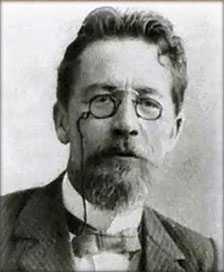V.Albov considered the story as a signifier for Chekhov’s search for what he termed as the ‘guiding idea’. “Only the lofty ideal makes life meaningful, gives it purpose, making it joyful and happy. This may be any dream you like, even madman’s delirium, but it still is better than this depressing reality,” he wrote in 1903. Fyodor Batyushkov seemed to support such view. “Now we begin to understand why Chekhov has always insisted upon the subjective, relativistic nature of all human norms; they are but steps for something high and distant, which our conscious mind can only guess at,” he opined in his 1903 essay “About Chekhov”.
Chekhov’s French translator Jules Legras thought such a plotline would suit rather a novel, than novella. “Potentially it amounts to a vast novel about a highly educated, nervously agitated Russian man,” he wrote to Chekhov on 9 June 1895. Legras considered the story’s second part to be more of a sketch, especially next to the ‘well-painted’ first one. To become a novelist, though, according to Legras, Checkov would need to “considerably change his maniere, stop being content with using these concise, finely chiseled phrases”, to such great effect, “become more involved with what’s going on”, and “love the life” rather than remain its “cruel observer”.
Film adaptations
Чёрный монах, a 1988 TV film adaptation by Ivan Dykhovichny (script by Sergei Solovyov), featuring Stanislav Lyubshin and Tatyana Drubich.
The Black Monk, a feature-length fiction film (2017) by Marylou and Jerome Bongiorno, inspired by the Chekhov short story. It depicts a filmmaker struggling with sanity who encounters a legendary monk and uncovers the meaning of life and a lost love.
